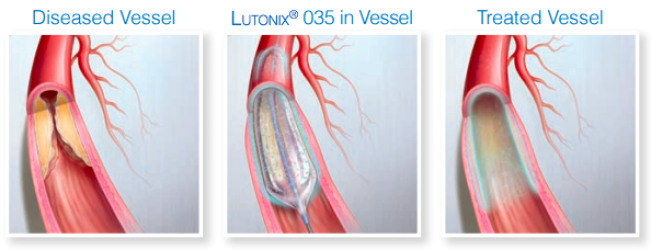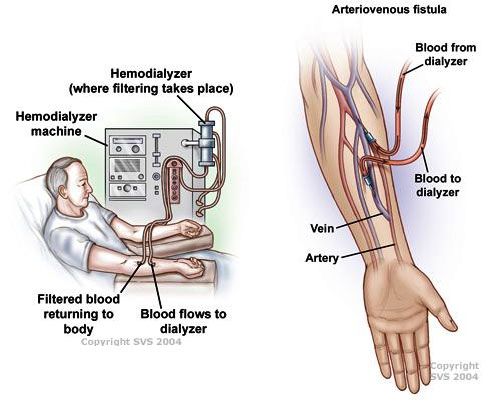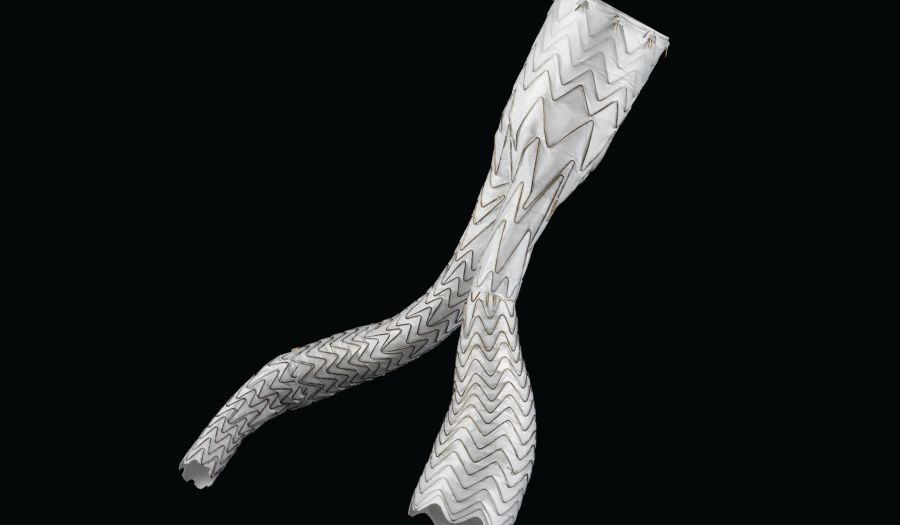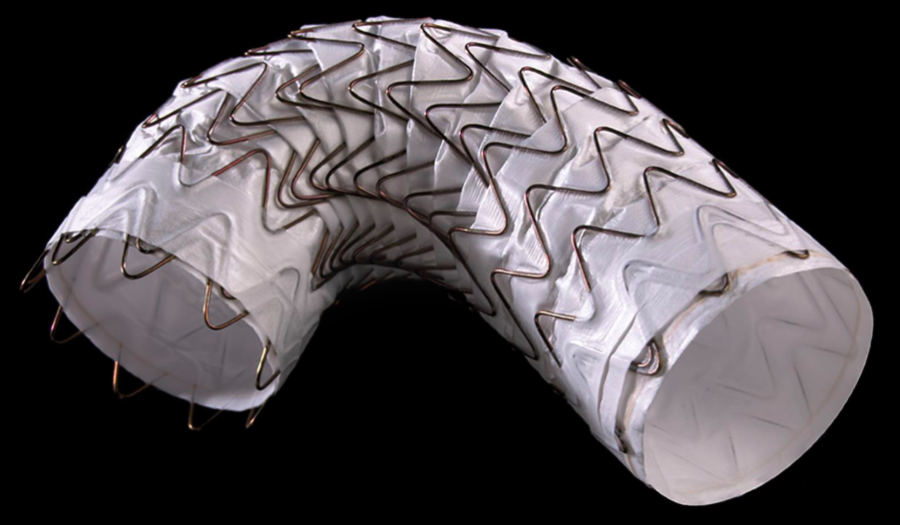Vascular
surgery
Peripheral Artery Disease (PAD)
Peripheral artery disease, or PAD, is a cardiovascular disease which mainly affects the arteries that carry blood to the legs and feet. In PAD, arteries are narrowed and made less elastic by changes in the artery walls. PAD is caused by “atherosclerosis,” which refers to a buildup called “plaque,” made up of cholesterol, fatty substances, calcium and fibrin (protein involved in the clotting of blood). This buildup reduces blood flow through the arteries and can lead to pain and lack of mobility.
PAD Symptoms
- Weakness in legs
- Leg pain in the muscles while walking or during mild exercise, which goes away when you rest
- Cramps, tiredness or pain in your legs, thighs or buttocks
- Skin wounds or sores on your legs, feet, or toes that are slow to heal
- Foot or toe pain at rest that often disturbs your sleep
Treatment Options
-
Angioplasty with Stent Placement is a minimally invasive in-office procedure and is performed by making a small incision through which a catheter is inserted to reach the blocked artery. A tiny balloon is inflated inside the artery to open the clog. A stent — a tiny wire mesh cylinder — may also be implanted at this time to help hold the artery open. Sometimes a medicine can be given through the catheter or a special device can be inserted through it to remove a clot that’s blocking the artery.
-
Atherectomy is a procedure to remove plaque from the artery.
If there’s a long portion of an artery in your leg that’s completely blocked and you’re having severe symptoms, surgery may be necessary. A vein from another part of the body can be used to “bypass” and reroute blood around the closed artery.

BARD Lutonix035 Drug Coated Balloon
FIND OUT MORE

Phoenix atherectomy hybrid system
FIND OUT MORE
Venous Thrombosis
Blood clot within the veins, usually accompanied by inflammation of the vessel wall. Major consequences are embolization (usually to the lung), & postphlebitic syndrome.
Deep Vein Thrombosis (DVT)
Deep vein thrombosis, or DVT, is a large blood clot that forms in one or more of the deep veins in your body. DVT usually happens in the legs or pelvis, but a clot can form anywhere in your body. Sometimes, part of the blood clot can break off and travel to your lungs. This can block blood flow and cause a pulmonary embolism, which is a serious and potentially deadly condition.
Symptoms
- Redness over site
- Pain in calf when bending foot toward the head
- Swelling
- Bluish Discoloration
Treatment Options
- Several medications may be used to dissolve a clot, or to prevent a clot formation
- An Inferior Vena Cava Filter (IVC) may be placed using catheters that are inserted into a blood vessel, to prevent clots from traveling to the heart and lungs.
- Thrombolysis may also be performed that involves placing a catheter at the sight of thrombus, and infusing clot dissolving medication directly on the sight.
Pulmonary Embolism (PE)
A serious complication of DVT is Pulmonary embolism (Pe). Some or all of the DVT breaks free from its original site in a vein and travels through the heart into the lungs.
Symptoms
- Difficulty Breathing
- Chest Pain
- Heart Palpitations
- Racing Heartbeat
Seek treatment as soon as possible.
Treatment Options
Timely intervention with blood thinners and catheter directed thrombolysis can save tissue and lives.

Aneurysms
Abdominal Aortic Aneurysm (AAA)
A progressive weakening of the aortic wall can cause an Abdominal Aortic Aneurysm (AAA), and without treatment, may continue to grow and rupture if not treated. A ruptured AAA is a life-threatening medical emergency.
Thoracic Aortic Aneurysms (TAA)
TAA is the swelling or ballooning of the thoracic aorta. The aorta is the main artery that carries oxygen-filled blood from the heart to all parts of the body. In the thorax (chest), once leaving the heart, blood travels upward through the ascending aorta, turning into the aortic arch, and branching into the innominate, left common carotid, and left subclavian arteries. These branch vessels carry blood to the heart muscle, arms, shoulders, chest, neck, face, and head (including the brain). Once past the aortic arch, the aorta turns downward into the descending aorta and carries blood to the intercostal arteries, spinal arteries, and ultimately other lower organs and areas of the body
A typical exam will include an Abdominal ultrasound and/or an angiography.
Symptoms
- There are usually no symptoms, Unless rupture occurs:
- Abdominal pain
- Shock
Treatment Options
- Stenting
- Endovascular repair is a procedure for the treatment of abdominal aortic aneurysms. Less invasive than open surgery, it involves excluding (sealing off) the aneurysm by placing an endovascular graft inside of the diseased aorta, making a new path for the blood to flow. The GORE® EXCLUDER® AAA Endoprosthesis remains inside the aorta permanently through the use of metal prongs, or anchors, as well as a tight fit (radial force) against the wall of the aorta.
Carotid Artery Disease
Narrowing of the carotid artery due to plaque build-up. The carotid arteries are essential as they supply blood to the large front part of the brain. Over time, this narrowing may eventually become so severe that blockages decrease blood flow to the brain and may tragically cause a stroke.
Symptoms
- Contralateral Motor or Sensory Defect
- Monocular Blindness
- Falls without Syncope
- Vertigo
- Loss of Coordination
- Carotid Bruits
Seek treatment as soon as possible.
Treatment Options
- Smoking Cessation
- Blood Pressure Control
- Use of Antiplatelet Medicine, Statins
- Carotid Endarterectomy is a surgical procedure to open or clean the carotid artery with the goal of stroke prevention. It is a durable procedure but not a cure; though rare, blockage can accumulate again.
- Carotid Artery Stenting (CAS) is an endovascular procedure where a stent is deployed within the lumen of the carotid artery to treat narrowing of the carotid artery and decrease the risk of stroke.
- TCAR Procedure – When our patients require surgery to address their carotid artery disease, one of the first things to consider is the impact that surgery might have on the patient, the patient’s body and, importantly, the patient’s brain. While any repair of the carotid artery carries some risk of stroke caused by the repair itself, South Carolina Surgical uses the TCAR Procedure, a procedure that carries the same low stroke rate as the traditional surgical option with a less invasive approach that reduces the risk of heart attack, nerve injury and reduces the time required to perform the procedure and the amount of time the average patient needs to spend recovering in hospital.
TCAR Procedure
The Transcarotid Artery Revascularization (TCAR) Procedure available from South Carolina Surgical is a clinically proven treatment option for carotid artery disease.
The procedure begins with a small incision made just above the collarbone to allow access to the carotid artery. A short hollow tube called a sheath is then placed in the carotid artery.
To protect the brain from debris during the procedure, a circuit outside the body directs the blood flow away from the brain and safely back into a vein in the leg. This is called “reverse flow” and allows our surgeon to place a stent (an expandable mesh tube) at the site of the disease for long-term plaque stabilization and stroke prevention.
Hemodialysis Access Surgery
If your kidneys fail, unless and until you have a successful kidney transplant, you will need dialysis therapy to clean and filter your blood. The safest solution for patients who will undergo long-term dialysis treatment is to implement access with hemodialysis access surgery.
Your dialysis access surgeon will explain the procedure and perform a physical exam, focusing on the arm or leg selected. Usually, an ultrasound scan is used to “map” your veins to see if they are large enough for an AV fistula. If not, an AV graft will be needed.
The Procedure
- In the operating room, your arm or leg is cleansed with an antiseptic solution and sterile drapes are placed around it.
- An incision is made between the artery and vein, and the vessels to be joined are prepared.
- If creating a fistula, your surgeon may divide the vein and sew one end to the side of the artery, or may sew the two vessels side-to-side without dividing the vein.
- If a graft will be placed, your surgeon will sew it between the artery and vein.
- The incision in your arm or leg will be closed and a sterile dressing will be applied.

Get In Touch
Visit Us
South Carolina Surgical
& Medical Aesthetics
3045 St Matthews Rd
Orangeburg, SC 29118

Contact Us
Phone: 803-747-7242
Billing: 877-710-0527 or 614-965-6733
Fax: 803-747-7243
Email: contact@southcarolinasurgical.com
languageline.com and South Carolina School for the Deaf and Blind services are available for interpretation needs.


